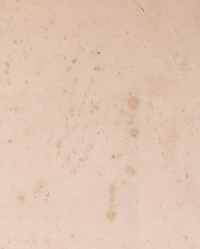Related Information
"As humans grow older, they often develop skin discolorations. Old books do, too, and it's called foxing…. The name, first recorded in the middle of the nineteenth century, comes from the observations that it looked as if a fox with muddy paws had trampled across the page."
-- The Care and Feeding of Books Old and New: A Simple Repair Manual for Book Lovers by Margaret Rosenberg & Bern Marcowitz

While modern paper production methods largely eliminate foxing, advice to minimize foxing usually involves keeping the books or paper away from humidity.
"Foxing can be minimized by keeping the print in a cool, low-humidity environment" -- Audubon Art Prints: A Collectors Guide to Every Edition by Bill Steiner
"Foxing is due to the chemical reaction of a micro-organism on paper which has been badly bleached or insufficiently sized in manufacture, usually caused by damp or lack of ventilation." -- ABC for Book Collectors (8th Edition) by John Carter & Nicolas Barker
Book collectors generally make their peace with foxing as one of the many factors that make old books unique. The process for treating or reversing foxing is expensive and impractical for the vast majority of antiquarian books:
"Professional books restorers can treat foxing, but may charge as much as a dermatologist would to remove comparable imperfections from your skin. The process involves unbinding the book and treating each individual leaf in deacidifying, sizing, and bleaching solutions, after which the book must be reassembled." -- The Care and Feeding of Books Old and New, Rosenberg & Marcowitz
(Image sources: top: wikipedia_commons; right: ILAB)
